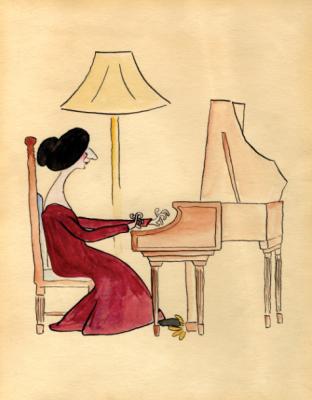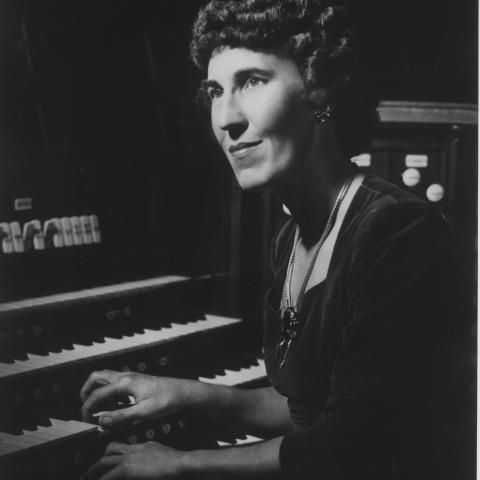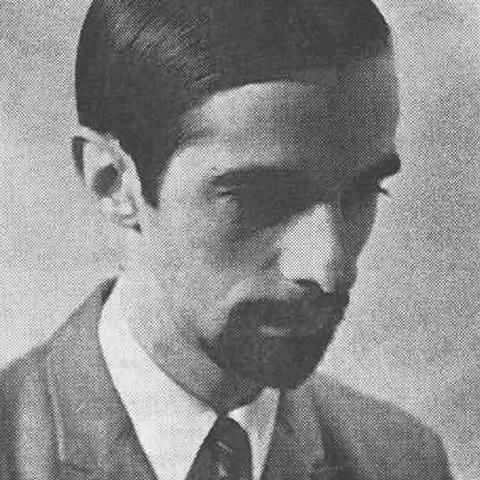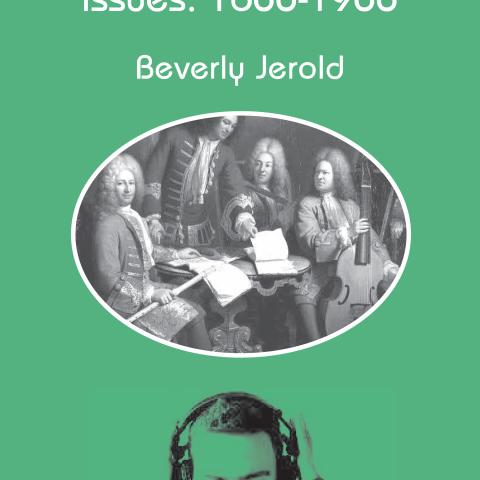
Christmas gifts:
a few suggestions
Writing this column in mid-October means that I have not given much thought to Christmas shopping. Instead I have spent most working hours planning programs (and then practicing) for the second in our annual schedule of three house concerts, enjoyed the opening nights of Dallas Opera’s fall season by attending Wagner’s Flying Dutchman and Bizet’s Carmen, and preparing for the first-ever wedding to take place in our spacious music room. (After all, with a pipe organ and seating for forty guests, why not?)
However, now as you read these December Harpsichord Notes, I hope they may contain some suggestions that could be of help for all who have yet to make gift selections. So, tally-ho and read on!
• Eagle-eyed subscribers to The Diapason will have seen the notice of J. William Greene’s new compact disc Christmas Ayres and Dances in the Here & There section (page 12) of our October magazine. The disc (Pro Organo CD 7281) comprises Greene’s performances of his genial compositions played on a Gerrit Klop continuo organ and a single-manual harpsichord by Peter Fisk. The clever Baroque-style arrangements of familiar carols and secular songs of the season are sure to delight the ears of music-loving friends. Among my personal favorites is Greene’s Bell Fugue (based on Jingle Bells), sure to be a hit. For colleagues who are fellow keyboardists, why not purchase not only the compact disc, but also the printed scores for these captivating arrangements? All three volumes are available from Concordia Publishing House. Bell Fugue is the final piece in Volume II.
• An earlier publication by Edwin McLean (born 1951) bears the title A Baroque Christmas—Carols and Counterpoint for Keyboard (New Interpretations of traditional seasonal pieces for piano, organ, or harpsichord), issued in 2003 by Frank J. Hackinson (FJH Publishing Company), Fort Lauderdale, Florida. With works somewhat easier than Greene’s compositions, McLean offers a single forty-page volume of charming and useful pieces equally suited for all the instruments mentioned in his introduction, including digital keyboards. Eleven tunes are set: Noël Nouvelet, God Rest You Merry, Greensleeves, Coventry Carol, Kings of Orient, Pat-A-Pan, In dulci jubilo, Veni Emmanuel, Tempus Adest Floridum, Stille Nacht, and Adeste Fideles. I have used most of these for church and concerts and continue to enjoy them very much.
• Now for something completely different: author Mark Schweizer has made a slight deviation from the fourteen murder mysteries that began with The Alto Wore Tweed and progressed through the various vocal ranges (The Tenor Wore Tapshoes, The Diva Wore Diamonds, The Organist Wore Pumps, etc.), a series of novels that has captivated so many of us. A fifteenth story, also set in St. Germaine (Schweizer’s fictitious small town in North Carolina), is replete with the familiar cast of characters headed by Hayden Konig, police chief and organist/choirmaster extraordinaire of St. Barnabas Episcopal Church. But in the shorter novella titled simply The Christmas Cantata the author deviates slightly from the others in his series. It is available in the original paperback format (95 pages) or as a more recent hardback edition, both of which present exactly the same text, but the second edition is in a slightly smaller book format that requires 128 pages—more elegant and better, perhaps, for stocking stuffing. ’Tis a gentle tale, still filled with hilarious episodes, musical references, and sly liturgical guffaws: available from St. James Music Press (SJMP Books). You may wish to include a special handkerchief in that stocking, for the denouement is beautifully touching and may bring tears to the eyes. Also, a warning: this author’s mysteries are habit forming; I sincerely doubt that anyone can read just one! In a surprise email, received as I write this essay, Schweizer announced the fifteenth, and final, St. Germaine mystery: The Choirmaster Wore Out. Definitely a brand-new entry for acquiring and giving away!
• Thanks to my mother I began listening to operas at a tender age. Each Saturday afternoon in fall and winter, beginning when I was nine years old, my ears would be focused on our radio speaker as Mom and I listened to the New York Metropolitan Opera broadcasts in our small town of Corsica, Pennsylvania. I am grateful for this background as well as for my grade- and high-school experiences as a wind player, especially the ones after I began to play oboe. That, plus the choral directing experiences that were part and parcel of my graduate work and early professional engagements taught me a great deal about phrasing and making the music “breathe” in natural ways. I firmly believe that every keyboardist needs this type of training to become a better musician. Later these experiences engendered many a humorous moment in organ or harpsichord lessons when I would stop a student to suggest some necessary phrasing here or there, and often end with the comment, “I still can’t believe that you pay all this tuition for me to remind you to breathe and count!”
As an aid to the development of vocally informed musicality I would suggest as a Christmas gift, both to “self” and “others”—and a most unusual one, at that: ARC, which is the title of the Decca Records debut CD performed by countertenor Anthony Roth Costanzo. This artist (who has been selected as “Vocalist of the Year” by Musical America) has put together a program that demonstrates his self-admitted 50% love of Baroque music and 50% devotion to contemporary works. On this magnificent disc Costanzo performs works by Philip Glass and George Frideric Handel. This modern mastersinger of both styles convinced me of the beauty to be found in each, and I have listened repeatedly, enraptured by his musicality. Costanzo made his Dallas Opera debut on October 30, 2015, in the world premiere of Jake Heggie and Terrence McNally’s opera Great Scott. Since that magical evening I have been following Costanzo’s brilliant career. His artistry, both as singer and actor, earns him my highest recommendation and admiration.
• Another Handelian who could bring tears to the eyes with her exquisite vocalism was the mezzo-soprano Lorraine Hunt Lieberson, who began a musical career as violist, but soon was discovered to have one of the great female voices of the twentieth century. Sample her exquisite singing on the Avie CD 30, released in 2002—only four years before her untimely death at age 52. Lieberson is ably abetted by the Baroque specialist, conductor, and harpsichordist Harry Bicket, playing an Italianate single-manual harpsichord by Douglas Maple (after Zenti). This recording is another musical experience that just might be life changing.
• August 16, 2019, will be the sixtieth anniversary of Wanda Landowska’s death. The “mother of us all,” this pioneering harpsichordist still resonates through her recordings and through the memoirs contributed by her devoted friends (and occasional detractors). I was incredibly fortunate to have known Mrs. Putnam Aldrich, known universally as “Momo,” Landowska’s first private secretary during the years they spent together at Wanda’s “Temple of Music” in Saint-Leu-la-Forêt, France. I became acquainted with Momo through our mutual friend Richard Kurth, a fellow Ohioan who has spent most of his career teaching French and Spanish at the Kamehameha School in Honolulu. Richard, who drove Momo to the local Alliance Française meetings, actually accomplished our mutual introductions, and thus resulted my invitation for Momo to tell her account of those years for The Diapason. For many subsequent winters I spent my Christmas holidays visiting Richard and Momo in Hawaii (a tough choice, but someone needed to do it), interviewing Mrs. Aldrich year after year and taking notes that eventually found their way into Harpsichord in America: a Twentieth-Century Revival.
It was during one of these remarkable meetings that I, quite brazenly, asked Momo who might inherit a caricature of Wanda that was prominently displayed in each of Momo’s dwellings (she changed addresses several times during these years). That query remained unanswered until the last day of that year’s Honolulu sojourn when Momo handed me a wrapped package, approximately eight and a half inches by six and a half inches. I knew without looking what was enclosed in that brown paper, and I said, “You must keep this! I know what it means to you.” But Momo insisted, and, I confess, I did not argue with her for very long. The caricature, an unsigned watercolor, is widely considered to be the finest of all such drawings, especially in its perfect details.
When I arrived home in Dallas I immediately had some photographs made, and sent them to Momo so she would not be without that beautiful image. Eventually I loaned a professional high-decibel print of “my” Wanda portrait to Martin Elste for his 2009 Berlin Landowska Symposium and Exhibition, and it served as the signature work of that event. It also is published in Dr. Elste’s magnificent book Die Dame mit dem Cembalo [The Lady with the Harpsichord] (Schott Music, 2010, Order Number ED 20853; ISBN 978-3-7957-0710-1). The full-color print of the caricature may be found on page 98. The book’s text is entirely in German except for the four pages from the memoirs of American harpsichordist Irma Rogell: “Walks with Wanda,” on pages 146–150. Even if one is not fluent in German the comprehensive range of Elste’s illustrations (many of which are photographs that he travelled far and wide to make) places this deluxe 240-page volume at the top of the list as the most comprehensive pictorial history of our beloved “Mamusia.”
• I was tremendously moved by Martin Pearlman’s generosity with his Armand-Louis Couperin Edition, made available for all of us to download and print, free of any copyright restrictions. In a recent email Martin included a shorter URL for accessing his gift: http://tinyurl.com/ALCouperin. I pass it on to our readers as per Martin’s suggestion, and wish you, once again, a happy downloading experience.
It is with a small, Pearlman-inspired gesture that I offer my Christmas gift to our readers: free use of my Landowska caricature. Like Martin, I urge you to use it wherever and whenever you wish, copyright free. And, I would ask only that you use the credit “Larry Palmer collection, gift of Momo Aldrich.”
• As my final Christmas suggestion: if you have a friend or acquaintance who does not subscribe to The Diapason, why not present that lucky person with a year’s subscription to this journal? It would benefit your friends and help to ensure that the magazine continues in its beautiful, full-color format for many years to come. What could be nicer? And twelve times a year you make your friend(s) happy—and perhaps more involved in your musical world.





